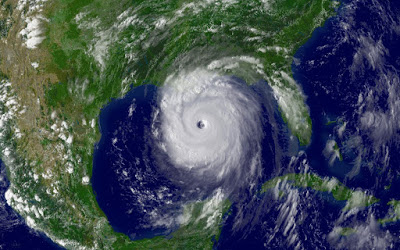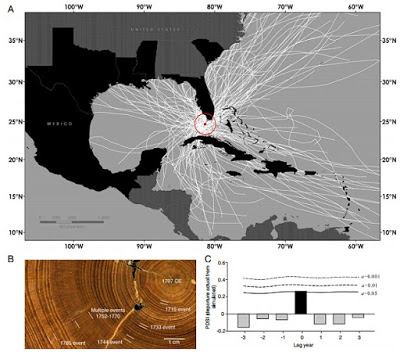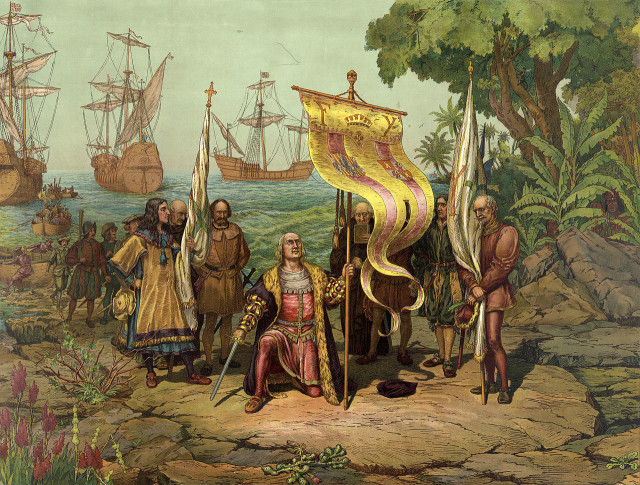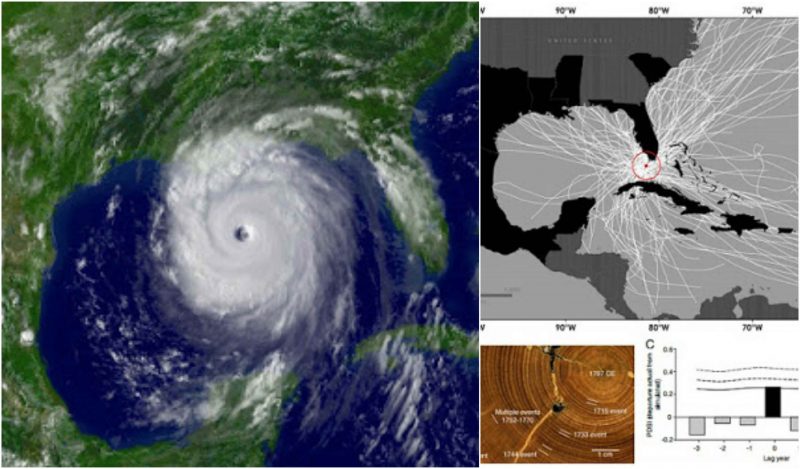There are thousands of shipwrecks in the sea and lakes. Whether they were sunk on purpose or sunk due to weather conditions will always remain a mystery. There has recently been new research that could possibly allow experts to track storms. This can all be done by studying the previous shipwrecks now lying in on the ocean floor.

One particular area that is being studied is in the Caribbean, where Spanish galleons sank during the buccaneer era. These wrecks are able to tell researchers how hurricanes affected the region. For the very first time, experts have been able to combine historic records of shipwrecks and tree-ring data in order to build a picture of the extreme climates from 1500. This would have been shortly after Christopher Columbus first reached the Caribbean.
This was at a time when trading routes from the New World to Spain were being used, and major, violent storms were the cause of many ships’ sinking in the area. By looking at the detailed Spanish records of ships and their cargoes, the University of Arizona’s researchers were able to compare the documents with the timbers that were salvaged from the wrecks.
After looking into the documents, the researchers found that the period between the years of 1645 to 1715 had the fewest Caribbean hurricanes since 1500. There was also a 75 percent reduction which actually coincided with a time with very little sunspot activity and cooler temperatures in the Northern Hemisphere.

Source Valerie Trouet, University of Arizona.
Associate professor Valerie Trouet said that she and her team were the first to use the shipwrecks in order to study hurricanes of the past. She added that by combining the shipwreck data and tree-ring data, they were able to extend the Caribbean hurricane data back in time and have been able to study the hurricanes’ variability.
Global climate models predict when hurricanes become more intense with global warming. However, these aren’t good at making the regional predictions. Plus, the records only started to be kept from 1850. Researchers also used lake sediments to make a record of hurricanes that had happened over the past centuries. However, these data only provided century-level resolution.
The new research done provides an annual record of Caribbean hurricanes which go back to the year 1500. They help develop accurate predicting models; this is most important in emergency planning and planning for economic costs. Other scientists say that between the years of 1870 and 2002, United States hurricanes have cost 40 billion dollars in today’s money.
The idea to track the hurricanes came from Grant Harley from the University of Southern Mississippi. He had a tree-ring record from the Florida Keys which dated back to 1707. The tree rings revealed that hurricanes had occurred. The growth of trees is different in years with hurricanes, so the phenomena are then reflected in the tree’s annual rings.
Marta Doniguez-Delmas, a dendroarchaeologist from the University of Santiago de Compostela in Lugo, Spain figured out when the Spanish ships were built by finding wood from shipwrecks then dating the wood. Combining data from these two sources then created the long-term history of Caribbean hurricanes.

With the ship logs, experts are able to identify the ships that were wrecked by storms during the hurricane seasons in years of 1495 and 1825. The results showed that the hurricane patterns from the shipwreck data closely matched Florida Keys tree-ring chronology of hurricanes from the years of 1707 to 1825. From there, the researchers overlapped the data with the tree-ring data and they discovered a 75 percent reduction in the hurricane activity from 1645 to 1715. This was a time period known as the Maunder Minimum.
Trouet, said that they hadn’t been looking for the Maunder Minimum – it simply popped up out of the data. This time coincided with low sunspot activity. Due to the earth’s receiving less solar radiation, there is a lull in sunspot activity. The Northern Hemisphere was cooler than in periods before or after that. Now that the researchers know that there was a lull in Caribbean hurricanes when the earth received less solar energy, it will help them get a better understanding of just how big of an influence the changes in radiation are.
